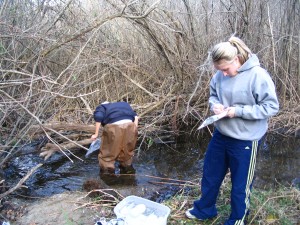Where Does the Plastic Go?

Originally appears in the Spring 2014 issue
SOCIO-SCIENTIFIC ISSUES (SSI) are societal challenges with important links to science. They are the kinds of issues in which many individuals (at least those who are not professional scientists) interact most often with science. Global climate change and genetic engineering are among the most prominent examples, and teachers have used these very well-known issues as a part of varied science learning experiences. Of course, there are many other examples with significant implications for students and our broader society. Plastic pollution in the world’s oceans is an important SSI which teachers can use as a context for student inquiry and learning of science content.
Plastic Pollution
Every day, North Americans encounter plastic containers that hold a variety of consumable products: water, soda, laundry detergent, and foods. The U.S. Environmental Protection Agency (EPA) estimated that Americans generated over 31 million tons of plastic waste in 2010. So what happens to all the plastics that we produce and consume?
We recycle some, but only 6.4 % of the plastics used in durable goods and hardly any of the nondurable plastics are recycled. There are many different kinds of plastics and some types of plastic are easier to recycle than others. This has created a major dilemma: plastics that are not properly placed in landfills or recovered for recycling end up in the natural environment. The misplacement of used plastics is a serious global problem. Plastics float through stormwater sewer systems, down waterways, onto coastlines, and accumulate in oceans and lakes due to their physical and chemical properties–even more so after heavy rains or large storms like hurricanes.
The plastics that get washed out into oceans gather in large clumps, forced together by the ocean waves and circulating currents. “There are over 46,000 pieces of plastic per square kilometre of the world’s ocean…a kind of marine soup whose main ingredient is floating plastic debris.” The large ocean clumps of plastics are known as “garbage patches,” and it is estimated there are now five major garbage patches circulating in the world’s oceans. The best known of these is the Great Pacific Garbage Patch. The Great Pacific Garbage Patch floats between Hawaii and the western coast of the United States and is estimated to be twice the size of the state of Texas. Another garbage patch was created in 2011 from the 9.0 earthquake off the coast of Japan that generated a tsunami.
Birds and other animals mistake plastic refuse for food and will eventually die if the plastic gets caught in their digestive system. Furthermore, when plastics get to the ocean, waves and currents start to physically break down the material into smaller pieces. Over time, sunlight initiates photodegradation, resulting in the breakdown of plastic debris into tiny particles. The chemical properties of plastics allow these tiny particles, which still float, to bind to other pollutants. Filter feeding organisms consume the plastic particles and the pollutants. As other organisms consume the filter feeders, the plastics and pollutants accumulate in their flesh. This process of bio-magnification disrupts food chains and leads to deadly consequences for organisms at the highest trophic levels of an ecological community.
In light of all this, not only is it important to properly dispose of and recycle plastic waste, but society should also consider rethinking the widespread use of plastics in our products. What can we do about this widespread issue of plastics in our society?
To view the photo-rich magazine version, click here.
If you are not already a subscriber, please subscribe to read the full article
By Christopher D. Murakami, Suleyman Cite, Dane L. Schaffer, and Troy D. Sadler
Leave a Reply
You must be logged in to post a comment.





